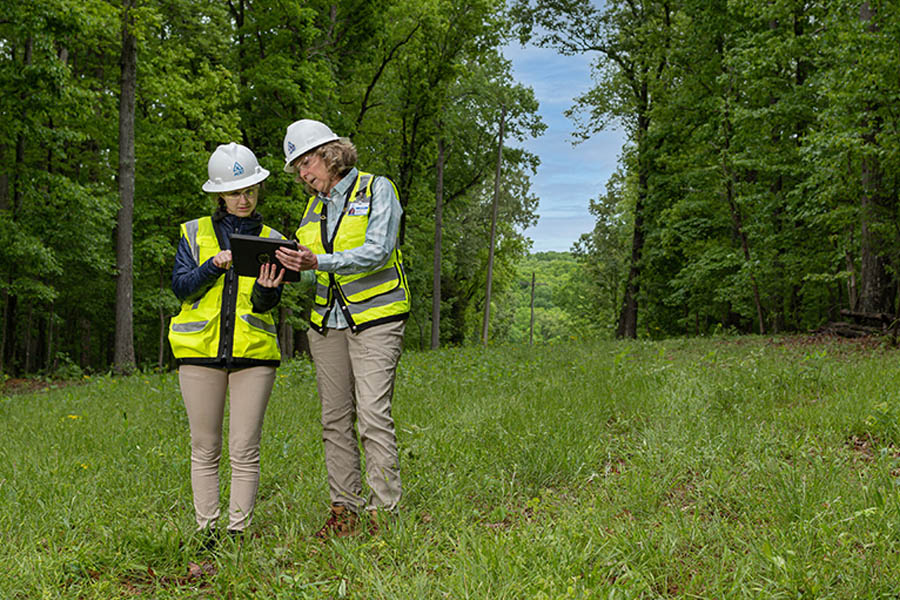Now Reading: Understanding Regulatory Compliance in Vegetation Management Operations
-
01
Understanding Regulatory Compliance in Vegetation Management Operations
Understanding Regulatory Compliance in Vegetation Management Operations

Picture this: you’re out in the field, chainsaws humming, teams trimming back overgrowth that’s threatening power lines or encroaching on protected habitats. The sun’s beating down, everything’s going smooth—until a regulator shows up with a clipboard and a frown. Suddenly, that routine job turns into a high-stakes drama where one missed permit could cost you big. In the world of vegetation management, compliance isn’t just paperwork; it’s the script that keeps your operation from turning into a blockbuster flop. We’re talking about balancing nature’s wild side with the demands of modern infrastructure, all while dodging fines that could sink a small fleet. Dive in with me as we unpack how to make compliance your secret weapon, blending hard facts with that insider know-how that turns headaches into high-fives.
The Real Cost of Non-Compliance in Vegetation Management
Let’s cut straight to the chase—non-compliance hits harder than a rogue branch in a storm. For utilities, something as simple as vegetation creeping too close to high-voltage lines can trigger FERC penalties up to a million bucks per day per violation. That’s not pocket change; it’s the kind of hit that reshapes your bottom line overnight. And it’s not just utilities feeling the burn—the global regulatory compliance market is ballooning toward $32.93 billion by 2029, growing at a steady 9.2% clip annually. Why? Because skipping the rules doesn’t just invite fines; it unleashes a cascade of chaos.
Think about the ripple effects. Immediate penalties can climb into the hundreds of thousands, draining resources faster than a drought. Projects grind to a halt, chewing through time and budgets while you scramble to fix things. Your reputation takes a nosedive, making future contracts as elusive as a rare bird in the canopy. Legal headaches pile up over environmental damage, and in the worst cases, operations shut down entirely until everything’s squared away. But here’s the silver lining: partnering with seasoned pros, like a vegetation management team in Tamworth or your local experts, flips the script. They know the terrain, both literal and legal, building in safeguards that keep risks at bay and your business thriving.
Regulatory Frameworks That Matter Most
Navigating regulations in vegetation management feels like piecing together a thriller plot with twists at every turn—agencies overlapping, rules shifting based on where you are and what you’re touching. It’s a puzzle where federal, state, and local pieces must fit just right, or the whole thing falls apart. Depending on your project’s scope, location, and eco-sensitivity, you could be juggling mandates from environmental protection bigwigs, forestry departments, councils, and utility overseers all at once. Miss one, and it’s game over.
At the federal level, the National Environmental Policy Act (NEPA) steals the spotlight, especially with fresh implementing regs that kicked in on July 1, 2024. These demand thorough environmental impact assessments for big jobs, zeroing in on critical habitats, endangered species, water resources, air quality, and even cultural sites that whisper stories from the past. It’s about painting a full picture before you make your move, ensuring every cut considers the broader ecosystem.
Then come the state and local layers, which vary like climates across a continent. Native vegetation gets fierce protection, with strict clearing limits that demand precision. Erosion control isn’t optional—it’s baked in during and after ops, with permits dictating how you handle the land. Restoration? That’s the encore, requiring you to heal what you’ve disturbed, leaving the site better than you found it, or at least as good.
For utilities, add in the North American Electric Reliability Corporation (NERC) standards, which amp up the intensity. They enforce minimum clearances between greens and grids, mandate regular inspections and maintenance rhythms, outline emergency plays, and insist on meticulous documentation. It’s a high-wire act where reliability meets responsibility, and one slip could black out more than just the lights.
Building Bulletproof Compliance Systems
Alright, lean in— the real magic happens when you build systems that make compliance feel effortless, like a well-oiled machine humming through the underbrush. It’s not about chasing rules; it’s about embedding them so deeply they become second nature. Start with risk assessment and planning, the opening scene where you map out every potential pitfall. Identify regs upfront, trace jurisdictional overlaps, timeline permits, and weave in monitoring from day one. Proactive beats reactive every time, turning potential disasters into dodged bullets.
Documentation? Don’t treat it like an afterthought—it’s your narrative thread, proving due diligence from plot to resolution. Capture pre-project assessments, permit trails, daily logs that nod to restrictions, monitoring data, and post-work restoration notes. It’s the evidence that stands up in court or audit, showcasing your commitment without a word.
And your team? They’re the stars of this show, so invest in their script. With 70% of compliance pros shifting to strategic mindsets, training evolves from basics to deep dives—understanding the ‘why’ behind rules, certifications for tricky tasks, protocols for surprises, and refreshers to keep skills sharp. It’s about empowering folks to adapt on the fly, turning knowledge into action that keeps everything on track.
Technology Solutions That Actually Work
Flash forward to the tech revolution sweeping vegetation management—93% of compliance teams swear by AI and cloud tools to lighten the load. It’s like upgrading from a flip phone to a smartphone; suddenly, everything’s smoother, smarter. Remote monitoring leads the charge: drones scouting from above, GPS ensuring you stay in bounds, digital systems logging data in real time, and auto-reports slashing paperwork. These aren’t gadgets; they’re game-changers that keep you compliant without breaking a sweat.
Then there’s predictive analytics, the crystal ball that spots trouble before it sprouts. Crunching data to flag high-risk zones, it can slash those hotspots by up to 42.5%. Imagine foreseeing encroachments or erosion risks, nipping them early— that’s proactive power, shifting from firefighting to foresight.
Managing Environmental Impact Assessments
Zoom in on environmental impact assessments—the pivotal plot twist where many ops hit snags. It looks simple on paper, but the nuances can trip you up like hidden roots. Kick off with early stakeholder chats to surface concerns before they fester. Baseline studies set the stage, capturing the ‘before’ snapshot. Mitigation strategies tackle risks head-on, while monitoring tracks the drama as it unfolds. And adaptive plans? They’re your rewrite tool, letting you pivot when the environment throws curveballs. It’s all about showing you’ve thought it through, managing impacts with care and cleverness.
Documentation Strategies That Save Your Business
Cut to the chase: when trouble knocks, your docs are the shield. Excellent systems resolve issues fast, capping penalties; sloppy ones drag you into prolonged battles with max fines. Adopt a three-tier approach for the win. Tier one handles ops—daily logs, maintenance, weather, decisions on the ground. Tier two covers compliance—permits, monitoring, regulatory chats. Tier three thinks big—plans, agreements, lessons that shape tomorrow.
Integrate digitally for seamless flow: mobile captures in the moment, auto-checks against permits, links to monitoring gear, and secure cloud storage. It’s the modern montage where data dances effortlessly, keeping you ahead of the curve.
FAQ
What are the main consequences of non-compliance in vegetation management?
Non-compliance can lead to hefty financial penalties, project delays, and reputational damage that hampers future opportunities. It may also result in legal liabilities and operational shutdowns until issues are fixed.
How do federal regulations like NEPA affect vegetation projects?
NEPA requires detailed environmental impact assessments for major projects, focusing on habitats, species, water, air, and cultural sites. The 2024 updates add layers to ensure thorough reviews before work begins.
What role does technology play in maintaining compliance?
Tech like drones, GPS, and predictive analytics streamlines monitoring and prevents issues proactively. It reduces risks by up to 42.5% and automates documentation for easier adherence.
Why is staff training crucial for regulatory compliance?
Training equips teams with knowledge of current rules and adaptive strategies, turning compliance into a strategic asset. It ensures competency through certifications and refreshers, minimizing on-site errors.
How can companies build effective documentation systems?
Use a three-tier structure for operational, compliance, and strategic records, integrated with digital tools for real-time capture. This creates a solid trail that demonstrates due diligence during audits.
What makes utility vegetation management regulations unique?
Utilities face NERC standards emphasizing clearances, inspections, emergencies, and reporting. These add specialized layers beyond general environmental rules to ensure grid reliability.





















